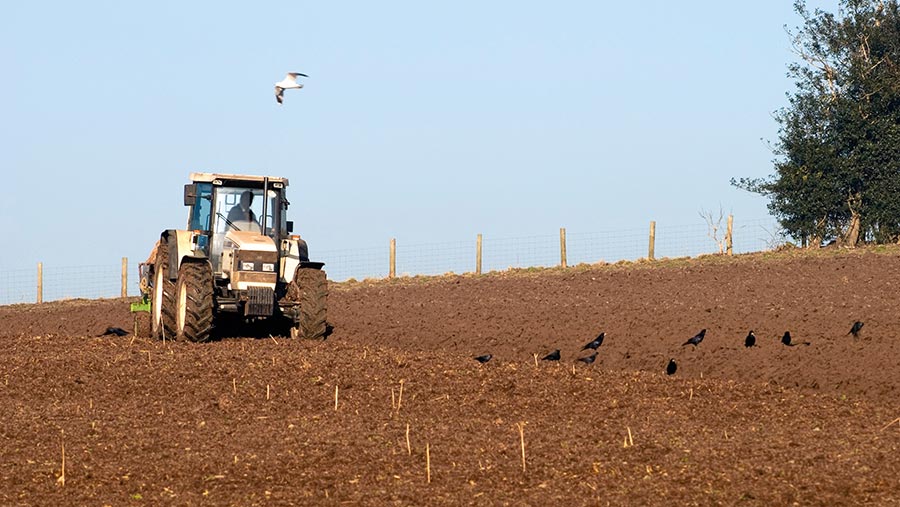Advice on managing farm business cashflow
 © Springfield Gallery/Adobe Stock
© Springfield Gallery/Adobe Stock Businesses that manage cash efficiently usually require less working capital, are not as vulnerable to trading peaks and troughs, and are able to obtain more competitive credit terms than others.
See also: Business Clinic – what tax relief can I get on my new dairy complex?
Have a financial plan
The short-term focus of any business must be working capital requirements to ensure trade can continue, says Bradley Hurn, agricultural business consultant at Brown & Co.
“This could mean reviewing existing facilities, forecasting future requirements, and reviewing long-term debt obligations.
“A budget will allow informed decisions to be made and is integral to facilitating discussions with your bank and illustrating the mechanics of your business.’’
For businesses with finance obligations, Mr Hurn advises them to consider their debt structure and how the changes in the bank base rate affect their business – that rate has so far increased from 0.1% to 3%.
“Stress testing businesses will give an insight into how performance will be impacted should interest rates rise further,’’ says Mr Hurn.
As an example, borrowing £500,000 over 10 years at 4% puts the annual repayments on an amortising basis at about £61,500.
If interest rates increase to 6%, this figure rises to £68,000/year and, at 8%, £74,500, he calculates.
Martyn Dobinson, a partner at accountants Saffery Champness, says that if additional funds or finance are needed, a discussion with the bank about fixing interest rates, or having an interest rate cap, is advisable.
“Banks tend not to respond well to last-minute calls for increased credit facilities, so keep them informed and try to plan as far ahead as possible for any additional funding requirements,’’ he says.
Don’t allow creditors to build up debt
Keep a careful eye on debtors and, in particular, the length of time they take to pay.
Implement a robust procedure to review debtors and to identify overdue accounts, or those where there is cause for concern, and follow these up promptly, says Mr Dobinson.
There is also the possibility of negotiating to bring payments forward with an appropriate discount for early payment.
“This has its place in the right circumstances but should be a last resort,” says Mr Hurn.
“It doesn’t necessarily sort out the long-term cash issues so shouldn’t be used to put off addressing the real issues within a business.”
It is also good practice to check the terms of trade thoroughly, he advises.
Manage costs
Consider where cutbacks and savings can be reasonably made – these may not be immediately apparent, but a detailed review of the cost base can identify opportunities to make cuts and improve financial performance.
Identifying savings is very difficult just now, says Mr Hurn.
“If you manage cash and are aware of costs, you can then monitor cost inflation throughout the year – if you truly know your costs, you will look harder at bills when they come in and identify areas of potential savings.
“Undertaking net margin analysis will ensure the correct combination of enterprises are taken forward to deliver the strongest possible financial outcome,” he says.
Knowing net margins/costs of production allows decisions about underperforming enterprises that are not contributing positively to the fixed-costs structure.
Proposed investments in property or machinery should be thoroughly challenged.
Where new plant and equipment is to be bought, make full use of existing rates of relief and allowances, advises Mr Dobinson, as some farmers lose out on this.
It is also important to remember that in order to qualify for capital allowances, the relevant date for most purchases is the date of delivery.
However, for items bought on hire purchase, the asset must be in use by the end of the accounting year in which the claim is made.
Recover all VAT
If the business is VAT registered, ensure VAT is being recovered on all inputs – some get missed.
Mr Dobinson advises those that are not VAT registered to consider whether registration could be beneficial.
“If selling to VAT-registered customers and VAT recovery is likely to exceed the cost of VAT compliance, then registering for VAT, even if below the registration threshold, might be to your advantage,’’ he says.
Other advisers point out that a review of machinery and equipment may yield items that can be sold, not only bringing in cash but also reducing the insurance inventory and maintenance burden.
Farm budget advice
One of the most common mistakes in budgeting is not looking at cashflow.
Farmers often look at their accounts or produce a simple budget – just because the business is profitable doesn’t necessarily mean it is cash positive or stable.
- All the below-the-line capital obligations need to be taken into account, including loans, HPs, machinery purchases and drawings. Importantly, tax is going to be a consideration given the levels of profit generated in the past year.
- Look into the real level of inflation and how this is going to affect the business – many have not yet done this.
- Schedule out all creditors and consider your position. This will help with planning.
- Detail is important. Time needs to be spent looking back through accounts software and unpicking the business. This needs to be reconciled on past spend and financial accounts. Where is money being spent? Are there one-off costs that need to be factored in? The credibility of the budget is dependent on interrogating historic data.
- Be realistic on yields, look back at past performance.
- Stress test the business against rising interest rates.
- Farmers tend to underestimate drawings – particularly given the cost-of-living increases.
- Allow for labour inflation of 5-10%.
- The 50% Basic Payment Scheme advance payment (England) made in July/August has probably been spent in many cases so won’t be there to offset large planned payments in December – for example, for fertiliser.
Source: Bradley Hurn, Brown & Co
